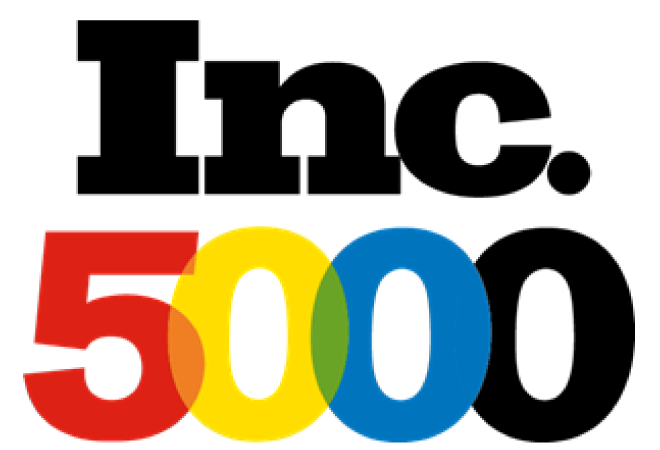The primary objective for any funding entity is to ensure that organizations receiving grants fulfill their proposed objectives within the allocated budget while generating positive returns. This ensures that the funds are utilized effectively and that the impact of the grants is maximized.
Although philanthropy is a crucial component of society, it is an ever-changing landscape, subject to socio-economic and political shifts. This makes managing funding and grants a complex process, with many variables that can quickly derail the success of a project. As such, organizations must comprehensively understand how to stay on track and avoid costly errors when managing funding.
For the most part, these costly errors can be swiftly rectified without causing significant damage.
But now and then, funders make significant judgments and errors that can result in major financial setbacks and, in the worst scenarios, create an opportunity for grant fraud to go unnoticed under their noses.
We have compiled a list of the most frequently made errors in grant management, enabling you to stay focused and prevent expensive mistakes. Have you unknowingly committed any of these common mistakes?
Let’s delve into the list and ensure you avoid these costly errors.
Insufficient Documentation
It is often emphasized that “If it isn’t written down, it didn’t happen.” This statement highlights the significance of comprehensive and accurate documentation in grant management. Inadequate or incomplete documentation such as missing grant reports, un-realistic budget or inaccurate financial statements can be a critical mistake, leading to various challeges and complications.
From meticulously keeping detailed records to diligently preparing project progress reports, the process of proper documentation plays an essential and crucial role in ensuring the success of grant management. It is a tangible proof of activities, expenditures, and achievements, providing transparency and accountability.
Neglecting proper records can have severe consequences, including financial mismanagement, improper allocation of funds, and potential compliance issues. By maintaining a robust system of detailed information, many organizations have the ability to effectively track and monitor the progress of their grant projects, making informed decisions and demonstrating responsible stewardship of resources.
To safeguard yourself falling into the trap of inadequate documentation, it is imperative to establish a structured approach. This involves organizing and maintaining all relevant documents throughout the grant project. By implementing efficient record-keeping practices, organizations can ensure compliance with regulations, mitigate risks, and enhance overall efficiency and effectiveness in grant management.
Unethical Leadership
Unethical leadership is a critical vulnerability that can bring down organizations of all sizes in any location.
In grant management, the consequences can be significant. A management team lacking ethical standards and boundaries appears as follows:
- Lack of clear policies
- Ambiguity in points of authority
- Insufficient individual accountability
- Deficiencies in reporting mechanisms for fraud and misconduct
- Absence of clear segregation of duties, roles, and responsibilities
- Inadequate internal control systems, such as failing to conduct regular audits
Leadership must create a culture that prioritizes ethics, transparency, and accountability. This culture should also extend to all levels of the organization.
To mitigate risks associated with unethical leadership, grant managers must regularly assess their management structure and make changes where necessary.
Inadequate Project Monitoring
Managing grants can be a complex endeavor involving multiple phases and layers that contribute to the success of a grant program. From the initial research and proposal writing to the meticulous review process and implementation, every step requires careful attention and strategic decision-making.
While managing funding projects may present its fair share of challenges, some actionable steps can be implemented to simplify and streamline the process. Establishing clear communication channels with grantees, providing comprehensive bias training to all involved parties, and adopting an organized and transparent review process can significantly minimize the likelihood of encountering obstacles and inefficiencies.
Failure to do so puts you at risk of falling victim to grant fraud and facing challenges like inadequate communication with grantees, a lack of bias training, and a disorganized review process.
Here are some potential risks associated with weak project monitoring:
- Inadequate or nonexistent project reporting
- Excessive dependence on volunteers, junior-level employees, and students
- Lackluster track record of past project outcomes
- Little to no experience in the field of work
To mitigate these risks, grant managers must prioritize proper project monitoring by implementing regular reviews and evaluations and ensure a diverse team is involved in the process. Noting that monitoring and evaluation (M&E) is vital to the grant management process. It allows funders to track progress, assess impact, and identify areas for improvement. This metric can also help you to track and report on the diversity of funding sources.
However, M & E needs to be more utilized in grant management. This can lead to ineffective use of funds and missed opportunities for growth and development.
To maximize the value of grants, ensure that proper M&E procedures are in place and regularly implemented throughout the project’s duration.
Inadequate Technological Security Measures
Effective grant management requires careful attention to sensitive areas, particularly when prioritizing technology security. Neglecting this crucial aspect is akin to inviting significant trouble.
- Insufficient technology security exposes your organization to various risks, such as:
- Unrestricted computer usage exposes organizations to potential cyber-attacks.
- Unauthorized access to sensitive grantee information, including financial records and donor data, poses a significant risk.
- Inadequate security measures heighten the likelihood of data breaches and the loss of critical information.
- The lack of policy documentation further exacerbates the vulnerabilities.
- Additionally, it creates opportunities for grant fraud and misconduct.
Therefore, it is vital to have proper information technology (IT) security measures in place to protect your organization’s data and confidential information, including regular backups, robust firewalls, strong passwords, and training for employees on IT security best practices.
This may also include implementing firewalls and encryption, regularly updating software, conducting security audits, and training employees on handling sensitive data. Having a clear IT security policy and ensuring everyone in the organization follows it is also crucial.
Lack of Communication and Transparency
Another common mistake in grant management is a significant need for more effective communication and transparency. It is crucial that funders consistently and proactively communicate clearly and openly with grantees and stakeholders throughout the entire process, leaving no room for ambiguity or confusion. This includes providing timely updates on the project’s progress, promptly addressing any issues or concerns raised by grantees or stakeholders, and being completely transparent about the decision-making processes involved.
By maintaining high communication and transparency, funders can foster trust and collaboration with grantees and stakeholders, leading to smoother project implementation and better outcomes. On the other hand, prioritizing effective communication and transparency can result in misunderstandings, delays in project progress, and ultimately, damaged relationships with grantees and stakeholders. Therefore, grant managers must recognize the importance of clear and open communication as a cornerstone of successful grant management.
Embrace Your Role as a Grantmaker
While the grant itself undoubtedly holds immense importance, it is crucial to recognize that the role of the grantmaker extends far beyond its provision. When submitting funding applications, nonprofits and organizations anticipate a comprehensive offering beyond mere financial support. When comparing grants, they consider a range of factors that contribute to the overall value and impact, such as the alignment of the grant with their mission, the potential for collaboration and capacity-building, and the availability of additional resources or support from the grantmaker.
As a funder, you also bring a valuable network of contacts to the recipients of your grants. By leveraging your connections, you can help the grantees expand their professional network, connect with potential collaborators, and access exposure to new ideas and perspectives. This additional support and access to opportunities can significantly enhance the grantees’ chances of success and contribute to the overall impact of your funding initiatives.
By offering comprehensive support beyond just financial assistance, you can significantly contribute to the initiative’s overall success and help your grantees achieve their goals. Your commitment to providing both financial and non-financial support demonstrates your dedication to making a lasting impact in the communities you serve.
Complicated the Grant Application Process
Applying for a grant can be both intimidating and thrilling. However, it is counterproductive for grantmakers to create unnecessary obstacles that discourage applicants from pursuing funding opportunities. While it is important to have a thorough and well-structured application process, making it simple can help potential applicants.
A lengthy and complicated application form can discourage organizations from applying for grants, especially smaller nonprofits without dedicated resources for grant writing.
Additionally, requiring excessive documentation or specific qualifications may limit the pool of eligible applicants and prevent deserving organizations from receiving funding.
To ensure a fair and accessible application process, grantmakers should strive to make the process as simple as possible. Ensure your application process is streamlined and concise, eliminating extra sections. Consider whether you truly require all the questions you’re asking. Simplifying the process will enhance clarity and user experience.
Failure to Establish Clear Submission Guidelines
Having clear guidelines can make a significant impact when reviewing applications. It helps streamline the process and ensures that the evaluation is efficient and effective. However, if your submission process is disorganized and chaotic, that’s precisely the kind of response you’ll receive.
Once you clearly understand the ideal structure, ensure effective communication on your websites, social channels, and any other public platforms you utilize.
This stage is referred to as the “pre-qualification stage.”
Clearly stating your expectations leaves no room for interpretation, automatically filtering out unsuitable candidates and leaving you with the cream of the crop.
Take CommunityForce, for example, where you can effortlessly pre-screen applicants and incorporate responsive questions based on their previous answers. This saves you valuable time, eliminating the need to sift through applications that are unlikely to proceed to the final round—the form handles it for you.
Ignoring Compliance Requirements
Compliance is the most critical aspect of grant management that should be noticed. Failure to comply with grant agreements, reporting requirements, and regulations can result in penalties or loss of funding.
It is crucial to thoroughly review all compliance requirements before accepting a grant and continually monitor and ensure compliance throughout the project.
Employing a Manual Approach for Reviewing Applications
If you receive only a few applications, it is acceptable to sort through them manually. However, you are likely expecting a much larger volume.
When reviewing a large number of applications, there is ample opportunity for errors, miscalculations, and immense frustration. Review teams can easily become overwhelmed, compromising accuracy in the process. This can be a daunting task with hours spent on them. The important thing to remember, especially when it comes to the allocation of hours to certain tasks and programs.
Implicit biases can easily find their way into our processes unnoticed. These biases persist within us, and unless we actively counteract them, they can also influence our review process. To mitigate this, consider using an automated system for reviewing applications.
Automation makes the process more efficient and accurate, eliminates potential biases, and ensures a fair evaluation of all applicants. Additionally, automated review systems can provide valuable data and insights to improve future grantmaking processes.
Embracing grant management technology by using a dedicated software can greatly benefit grantmakers and grantees, leading to more successful outcomes and stronger relationships. It is important for grantmakers to constantly evaluate and improve their processes and utilize technology to enhance efficiency, transparency, and fairness in the decision-making process.
A robust grants management software system mitigates this risk by handling all the repetitive tasks that arise during the review process. This empowers teams to allocate more time to the crucial aspects of their work, ensuring that organizations can fully focus on what matters most.
It is developing a management process that matches the impact of the grant itself.
Nobody does anything alone, and that’s precisely why many grantmakers are turning to CFF for seamless process management. Rest assured, we’re here to help you navigate the journey with the utmost efficiency and effectiveness.
To truly make an impact, one must first begin from within. You can effectively support external initiatives by streamlining internal processes and ensuring best practices.
By employing a smart grants management system, grantmakers can maximize their impact and contribution to the cause. From simplifying the application process to ensuring compliance and incorporating technology for fair evaluations, CommunityForce provides a comprehensive solution for managing grants from start to finish.
Learn more about CommunityForce
A robust grants management system that streamlines your workflow and empowers review teams with the freedom and peace of mind to choose the most deserving winners. It eliminates rough edges, ensuring a seamless process and optimal selection of worthy recipients.
So, before making any final decisions, reach out to the CommunityForce team and request a personalized platform demo to explore in-depth how this innovative solution can help you significantly enhance collaboration among team members, expedite the review process, and ultimately amplify your influence and impact.
Whether you’re a startup organization or a leading corporation, CommunityForce provides fully customizable, all-in-one online grant management solutions to maximize your efficiency, simplify complex processes, and improve collaboration so you can focus on increasing your impact. We’ve helped organizations streamline their entire process no matter the size and scope of their giving.






















